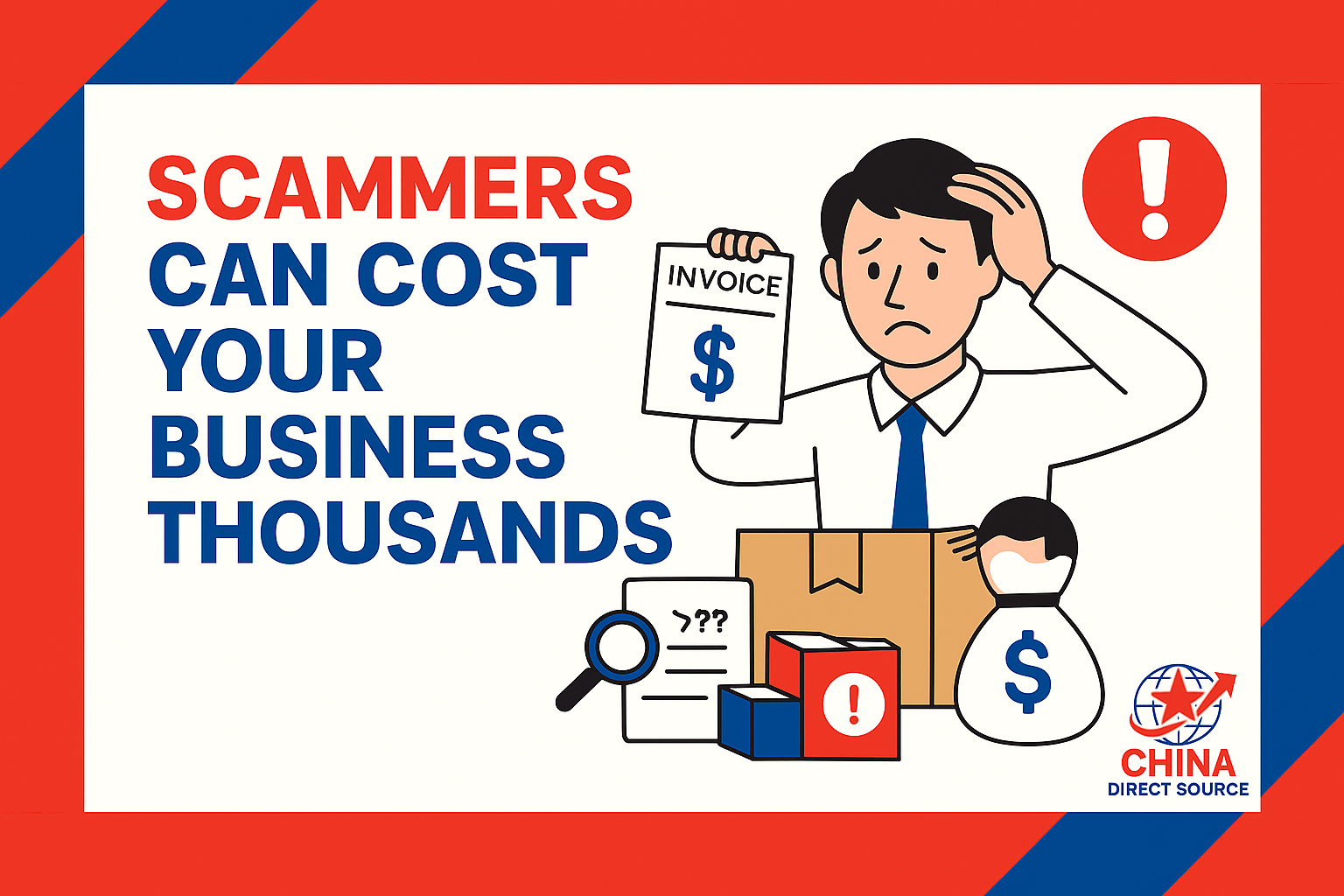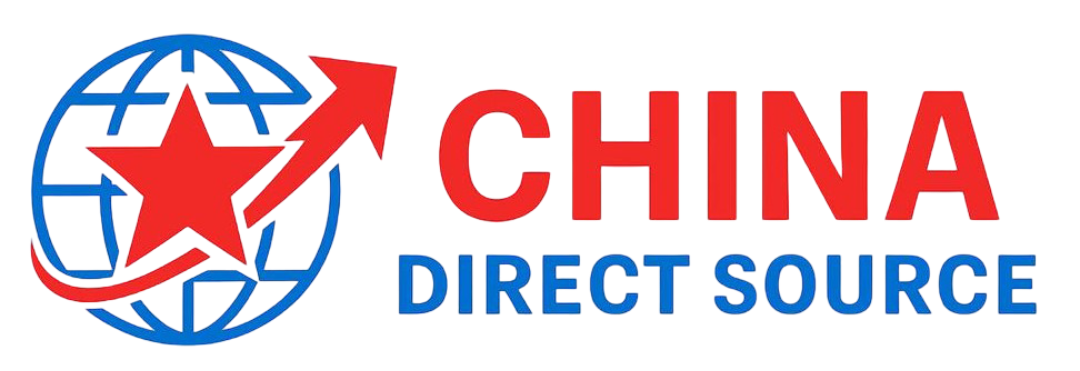For decades, China has been the world’s factory floor — producing everything from smartphones to apparel, furniture to industrial machinery. Importers are drawn to China because of its massive supplier base, competitive pricing, and global trade infrastructure.
But alongside opportunities, there are risks. Each year, countless businesses — especially small and medium-sized enterprises (SMEs) — fall victim to scams. These range from fake suppliers disappearing with deposits, to receiving subpar products that fail basic quality checks, to losing intellectual property rights.
The good news? Scams are preventable. With the right knowledge and process, you can safely navigate China’s sourcing landscape. This guide breaks down the most common scams, realistic case data, and step-by-step methods to avoid them.

Why Importers Get Scammed
Many importers blame “dishonest suppliers” — but in reality, scams thrive because buyers skip due diligence. Here’s why it happens:
- Market Complexity: China has millions of factories and trading companies. Distinguishing legitimate manufacturers from shell companies is challenging.
- Cultural & Legal Gaps: Differences in language, business norms, and legal enforcement make disputes difficult to resolve.
- Price Temptation: Many scams succeed because buyers can’t resist “too good to be true” offers. A smartphone that costs $5 instead of $25? That’s usually a red flag.
- Overconfidence: New importers often underestimate how sophisticated scammers have become — fake websites, forged certifications, and even fake factory tours.
Common Types of Scams in China Sourcing
Understanding scams is half the battle. Here are the most frequent ones importers face:
- Fake Suppliers / Shell Companies: Scammers pose as manufacturers but have no actual factory. They vanish after receiving deposits.
- Bait-and-Switch (Quality Switch): A high-quality sample is sent, but the bulk order uses cheaper materials or fails QC.
- Middlemen Pretending to Be Manufacturers: Trading companies masquerade as factories, outsourcing your order to unknown suppliers.
- Unrealistically Low Pricing: Offers that undercut the market drastically often mask hidden costs or lead to poor quality.
- Payment Fraud: Hackers intercept supplier emails, changing bank account details. Importers unknowingly wire money to criminals.
- Fake Certifications & Documents: Suppliers present counterfeit or expired certificates for CE, ISO, FDA, RoHS, etc.
- Counterfeit / IP Theft: Designs are copied and sold to other buyers — sometimes even before your shipment arrives.
- Logistics & Customs Fraud: Goods misdeclared or undervalued to reduce tariffs, risking fines, confiscation, or blacklisting.
Realistic Data & Case Insights
While exact figures vary, industry reports and sourcing agencies estimate the following:
| Risk | Estimated Frequency | Financial Impact (avg. SME order) |
|---|---|---|
| Bait-and-Switch (samples vs. bulk) | 30–50% of reported cases | $2,000–$10,000 in rework/returns |
| Fake or forged certifications | 20–30% | Customs seizure, fines, lost sales |
| Payment fraud (wrong bank account) | 10–15% | $1,000–$5,000 per case |
| Fake suppliers / shell companies | ~20% | Full deposit loss (commonly $2,000–$15,000) |
| IP theft (unprotected designs) | 60–70% of unregistered IP | Long-term brand erosion |
Case Example 1: A US retailer ordered 10,000 phone cases. The sample matched requirements, but bulk products had inconsistent colors and weaker material. Nearly 30% of units were unsellable, costing ~$3,000 in losses.
Case Example 2: An SME wired $2,500 to what appeared to be their supplier’s account. In reality, hackers had changed the bank details in a spoofed invoice email. The money was unrecoverable.
Step-by-Step Guide to Avoid Scams
Here’s how to protect your business with a systematic approach:
Step 1: Verify Supplier Credentials
- Request a copy of their business license and verify it on official Chinese government registries.
- Cross-check the company’s registered address with what’s on their website or invoices.
- Avoid suppliers who refuse to share registration info or push only for email/WhatsApp communication.
Step 2: Request & Test Samples
- Always request samples from multiple suppliers.
- Test for durability, safety, and compliance (send to certified labs if necessary).
- Establish a golden sample that sets the benchmark for mass production.
Step 3: Use Safe Payment Methods
- Prefer escrow, alipay, letters of credit, or staged payments (30% deposit, 70% after inspection).
- Ensure the bank account beneficiary matches the supplier’s company name.
- Treat sudden changes in payment details as an urgent red flag.
Step 4: Sign Contracts & NNN Agreements
- Draft contracts specifying:
- Product specs
- Delivery timelines
- Quality tolerances (AQL levels)
- Penalties for late shipments or substandard quality
- Use NNN (Non-Disclosure, Non-Use, Non-Circumvention) agreements to protect your IP.
Step 5: Conduct Factory Audits & Inspections
- Hire third-party agencies (e.g., SGS, Bureau Veritas, QIMA).
- Conduct:
- Pre-production audits to verify capabilities
- In-line inspections to catch defects early
- Pre-shipment inspections to confirm quality before release
Step 6: Watch for Red Flags
- Prices significantly below market average.
- Poor communication or evasive answers.
- Website only in English, no Chinese details.
- Reluctance to share factory photos, certifications, or references.
Step 7: Protect Your Intellectual Property
- Register trademarks and patents in China. Foreign registrations don’t automatically protect you.
- Limit design details until agreements are signed.
- Split orders between multiple suppliers when testing reliability.
Step 8: Monitor Shipments & Post-Sales Quality
- Verify shipping documents (bill of lading, customs paperwork).
- Inspect products upon arrival and document issues immediately.
- Maintain backup suppliers as contingency.

Red Flags Checklist
Quick reference for your team:
✅ Verify business licenses
✅ Cross-check payment details
✅ Always request multiple samples
✅ Use secure payment terms
✅ Get contracts signed (with IP protection)
✅ Conduct third-party inspections
✅ Watch for “too good to be true” prices
Conclusion: Trust Over Cheap Prices
Sourcing from China offers immense opportunities — but only for businesses that take the time to protect themselves. The reality is, scams target the unprepared.
By following this step-by-step process, you:
- Reduce risk of fraud
- Improve supplier relationships
- Protect your brand reputation
- Save thousands in hidden costs
Remember: Trust > Cheap Prices. It’s better to pay slightly more for a reliable partner than lose everything chasing bargains.
At China Direct Source, we specialize in connecting importers with pre-vetted, trustworthy suppliers, backed by audits, QC inspections, and secure processes.
👉 Ready to import smarter? [Get a Free Quote in 24 Hours] or [Schedule a Call] with our sourcing experts today.
